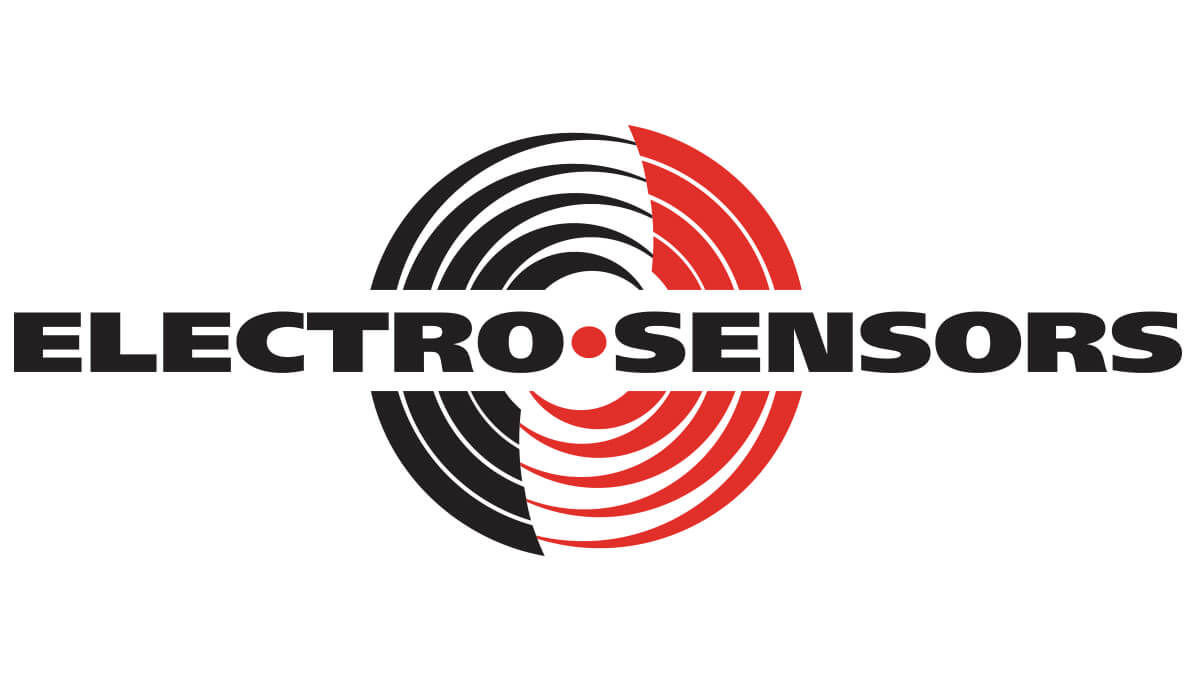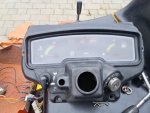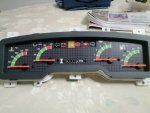Some may recall I installed a tach on my G2160 diesel. I used a winding tap in my alternator as the "trigger" signal and all is working fine so far. However I mistakenly ordered this giant tach (me being dumb and doing improper conversion metric to inches). So, I have a more appropriately sized one on the way. I can leave the alternator trigger in place but also considering installing a magnetic sensor at the flywheel. Would be worth the trouble and small expense to buy one and use it? Just kind of thinking out loud on it since I'm going to change the gauge out
Better Tach Trigger
- Thread starter lmichael
- Start date
well they work great if setup properly, but..... you'll have to find a GREAT way to secure the 'target' onto the flywheel as well as mount the sensor, which will need +12, ground. Also have to protect the sensor and wiring from rocks, branches,etc.
I was under the impression the teeth on the flywheel were the trigger (targets). Am I wrong assuming that? After all if you look at things like crank or cam shaft position sensors and the like there are no special targets attached. The alternator trigger point works ok (if a little slow to respond) but it's accurate when compared to an optical tachwell they work great if setup properly, but..... you'll have to find a GREAT way to secure the 'target' onto the flywheel as well as mount the sensor, which will need +12, ground. Also have to protect the sensor and wiring from rocks, branches,etc.
Russell King
Well-known member
Lifetime Member
Equipment
L185F, Modern Ag Competitor 4’ shredder, Rhino tiller, rear dirt scoop
There are proximity sensors that can operate off teeth/notches.
Look at Active Hall effect sensors
Here is a link that shows the difference between passive and active sensors. You would need to have active to see the teeth. You could use a passive sensor at the front if you installed a magnetic wheel (Link below of example)

 www.electro-sensors.com
www.electro-sensors.com
Look at Active Hall effect sensors
Here is a link that shows the difference between passive and active sensors. You would need to have active to see the teeth. You could use a passive sensor at the front if you installed a magnetic wheel (Link below of example)

Magnet Wheels
Comprise a ferro-magnetic nylon ring with 120 alternating magnetic poles and an aluminum hub.
a typical engine tach bases RPM on how many 'points' per revolution. A gal engine tach usually has 4-6-8 cyl' switch position to 'do the math', with a diesel, if using the flywheel, you'll need to know the number of teeth. Using the alternator is based on the pulley ratios and x3 for the internals of the alternator.
Since you can adjust or calibrate them, I can use my optical tach to calibrate it like I did with the alternator input. But yeah I may simply leave well enough alone
Using the alternator for sensing is prone to error through slippage and belt wear.
A magnetically biased sensor (active or passive) will work on the flywheel teeth and is precise. Count the teeth and you have the ratio. Direct crankshaft sensing would always be my preferred choice.
See also here: Tacho sensors
A magnetically biased sensor (active or passive) will work on the flywheel teeth and is precise. Count the teeth and you have the ratio. Direct crankshaft sensing would always be my preferred choice.
See also here: Tacho sensors
Last edited:
Is it really necessary to count teeth? Since the tach has a calibrate feature. If I set to an RPM using my optical tach, then calibrate the tach to that reading i.e. run up to say 2k, calibrate tach reading to 2k, then check again at various stages i.e. idle, 1500, 2k, 2500. This is what I had to do to calibrate the current tach once I was able to find the correct winding in the alternator to tap.Using the alternator for sensing is prone to error through slippage and belt wear.
A magnetically biased sensor (active or passive) will work on the flywheel teeth and is precise. Count the teeth and you have the ratio. Direct crankshaft sensing would always be my preferred choice.
See also here: Tacho sensors
Of course you can calibrate it too.
I still think counting teeth is faster and more precise. I took a marker pen and put a dot on every 10th tooth, otherwise it got too confusing.
I still think counting teeth is faster and more precise. I took a marker pen and put a dot on every 10th tooth, otherwise it got too confusing.
It must be a 'fancy' new fangled 'digital tach' if ti has a calibrate feature ! I used to make real nice anaolg ones based on a GE design using a UJT and 4" meter. Super smoooth and linear.
Today probably use $1 PIC and $4 LCD screen, case costing more than the 'guts'.
No need to count teeth, parts page should have number of teeth listed for the ring gear..
Today probably use $1 PIC and $4 LCD screen, case costing more than the 'guts'.
No need to count teeth, parts page should have number of teeth listed for the ring gear..
I just added an analogue meter when I changed the instrument panel. But yes, the signal is going through a processor that was there anyway.
 , but my parts manual does not have the number of teeth in it.
, but my parts manual does not have the number of teeth in it.
Just checked, you gave me a fright there that my teeth counting was a waste of timeNo need to count teeth, parts page should have number of teeth listed for the ring gear..
Attachments
-
453.3 KB Views: 28
-
235.5 KB Views: 31
-
262.8 KB Views: 30
It's an analogue tach (though obviously not mechanical) Even my current tach has a calibration function.




